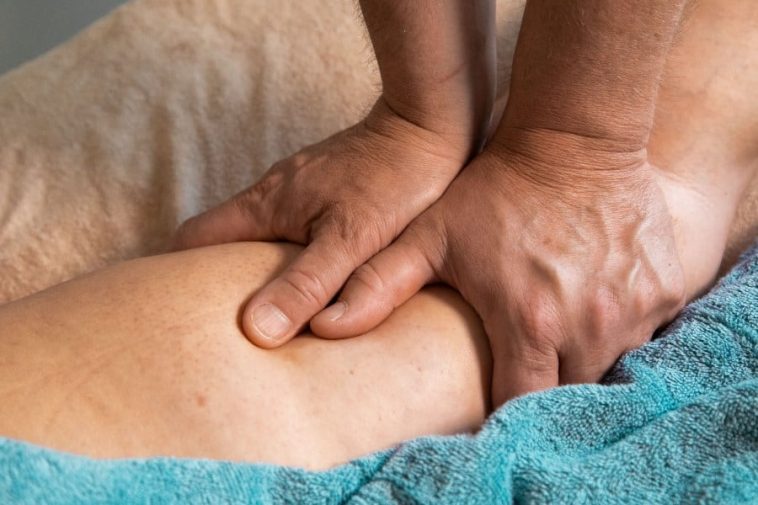Vein health plays a crucial role in maintaining overall well-being. However, it often goes unnoticed until problems arise. Adopting simple lifestyle changes can help promote healthy circulation and prevent potential complications. In this beginner’s guide, we will explore the importance of vein health and discuss tips for maintaining healthy circulation.
Understanding Vein Health
Veins are integral to our circulatory system, carrying deoxygenated blood back to the heart. These blood vessels have one-way valves that prevent the backflow of blood. They work against gravity to return blood to the heart. When these valves weaken or become damaged, blood can pool in the veins. Poor blood flow can result in conditions such as:
– Varicose veins

– Spider veins
– Deep vein thrombosis (DVT)
Maintaining healthy veins is essential for proper blood flow and cardiovascular health. However, some factors can affect vein health and lead to various complications. These factors can be the following:
– Age
– Genetics
– Lifestyle choices
– Certain medical conditions
If you notice that the veins protrude from your skin and look twisted, it may indicate a vein disease. A Vein doctor is a specialist you should visit to receive a diagnosis and treatment for your condition.
Tips for Healthy Circulation
The following tips can help you improve healthy circulation and prevent a vein disease:
1. Regular physical activity
Engaging in regular exercise helps promote blood circulation and strengthens the leg muscles. Some great activities that support healthy veins are:
– Walking
– Swimming
– Cycling
2. Maintaining a healthy weight
Excess weight can strain the veins, leading to circulation problems. Maintaining a healthy weight relieves the pressure on the veins, decreasing the risk of vein-related conditions.
3. Following a balanced diet
A fiber-rich diet, antioxidants, and vitamins can promote cardiovascular health. A healthy diet includes foods like:
– Fruits
– Vegetables
– Whole grains
– Lean proteins and healthy fats
4. Avoiding prolonged sitting or standing
Sitting or standing for long periods without movement can hamper blood circulation. Take breaks and walk around to keep the blood flowing.
5. Elevating the legs
Elevating the legs above heart level, especially after extended periods of sitting or standing, can help reduce swelling and improve circulation.
6. Wearing compression stockings
Compression stockings provide gentle pressure on the leg. These garments aid blood flow and prevent blood from pooling in the veins.
7. Taking breaks during long journeys
If you’re traveling for an extended period, take breaks to stretch and move around. Sitting for prolonged periods in planes or cars can increase the risk of blood clots.
8. Avoiding tight clothing
Tight clothing, especially around the waist or legs, can restrict blood flow and contribute to vein-related issues. Opt for loose-fitting clothes instead.
9. Quitting smoking
Smoking damages blood vessels and reduces circulation. Quitting smoking not only benefits vein health but also improves cardiovascular well-being.
10. Managing stress levels
Chronic stress can negatively impact vein health. Engage in stress-relieving activities such as yoga or meditation to promote healthy circulation.
11. Staying hydrated
Drinking an adequate amount of water helps maintain optimal blood viscosity. This facilitates proper blood flow through the veins.
12. Avoiding excessive heat exposure
Prolonged exposure to heat, such as hot baths, can dilate blood vessels and affect vein health. Limit heat exposure and opt for cool showers or baths instead.
13. Treating underlying health conditions
Certain health conditions, such as high blood pressure or diabetes, can contribute to vein problems. Proper management of these conditions is vital for vein health.
14. Wearing sunscreen
Protect your skin from harmful UV rays with sunscreen. This can help prevent the development of spider veins, a common cosmetic vein issue.
15. Practicing leg exercises
Simple leg exercises can help improve blood circulation in the legs. Practice ankle rotations, calf raises, and leg lifts.
Conclusion
Caring for your vein health is an essential aspect of well-being. You can take proactive steps toward maintaining healthy circulation by implementing simple lifestyle changes. Prioritize regular physical activity and incorporate the tips outlined in this guide. Doing so can support healthy vein function and reduce the risk of vein-related complications.





